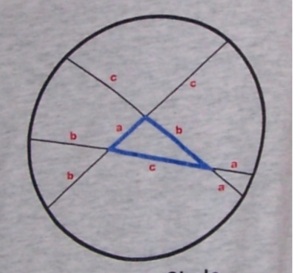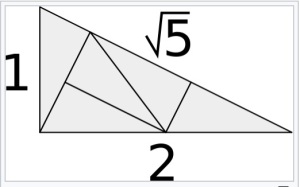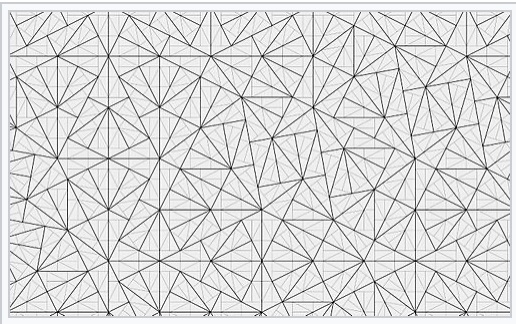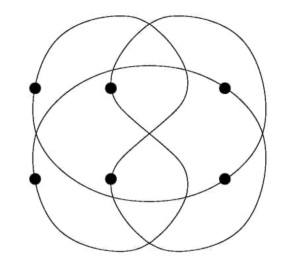John Horton Conway died on April 11, 2020, at the age of 82, from complications related to COVID-19. See this obituary from Princeton University for an overview of Conway’s life and contributions to mathematics. Many readers of this blog will already be familiar with the Game of Life, surreal numbers, the Doomsday algorithm, monstrous moonshine, Sprouts, and the 15 theorem, to name just a few of Conway’s contributions to mathematics. In any case, much has already been written about all of these topics and I cannot do justice to them in a short blog post like this. So instead, I’ll focus on describing a handful of Conway’s somewhat lesser-known mathematical gems.

My selection of topics here is heavily influenced by my own aesthetic tastes, what I happen to be familiar with, and what I’m able to describe concisely and in a relatively non-technical way. Nevertheless, I hope this short discussion helps convey how marvelously original and varied Conway’s mathematical ideas were.
Personal recollections
I didn’t know John Conway well, but I met him several times and he never failed to make a strong impression. For example, once I was giving a colloquium talk at Princeton and had a couple of hours to kill before my lecture. John Conway and I ended up chatting for two hours in the math department common room about the pros and cons of different methods for mentally calculating the day of the week for any given date (Conway, of course, argued forcefully for his own Doomsday Method).
Another time we interacted was at one of the Gatherings for Gardner. I showed him one of Simon Aronson‘s amazing card tricks and Conway demanded that I explain how it worked. Normally I would politely refuse, but for John Conway I of course made an exception.
His mathematical work was incredibly creative and singularly original. I particularly loved Conway’s books “The Sensual Quadratic Form” and “The Book of Numbers” (written with Richard K. Guy), and Donald Knuth’s book “Surreal Numbers” is a fascinating account of one of Conway’s many strange but profound inventions.
And now for the promised lesser known mathematical gems.
The Conway circle
Conway discovered that if you extend the sides of any triangle beyond each vertex, at a distance equal to the length of the opposite side, the resulting six points lie on a circle. Here is an illustration of this theorem as it appeared on a MathCamp t-shirt:

The center of the Conway circle is the incenter of the triangle (the intersection of the angle bisectors). See this page for more information. Although certainly not John Conway’s deepest contribution to mathematics, it is not every day that someone discovers a basic fact about triangles and circles which in principle could have been found by Euclid.
The look-and-say sequence
The look-and-say sequence begins
1, 11, 21, 1211, 111221, 312211, 13112221, 1113213211, …
The second term (11) comes from the fact that the first term has “one 1”. The third term (21) comes from the fact that the second term has “two 1’s”. The fourth term (1211) comes from the fact that the third term has “one 2 and one 1”.
Do you see the pattern?
One of Conway’s surprising discoveries is that each term in this sequence is approximately 30% larger than the previous term. More precisely, the ratio of the term in the sequence to the
term in the sequence approaches
as
, where
is the unique positive root of a certain monic integer polynomial of degree 71.
Why does the sequence have a limit at all? Where does the degree 71 polynomial come from? One can find a nice discussion in this blog post by Nathaniel Johnston; see also Wikipedia or this Numberphile video by Conway himself.
The Conway-Gordon theorem
Conway proved that every embedding of the complete graph in
contains a non-trivial knot. The proof was later published in this paper by Conway and Gordon. The proof of by Conway and Gordon shows, in fact, that every spatial embedding of
contains a Hamiltonian cycle with non-zero Arf invariant. For a visualization of this result, see this Wolfram demonstration by Ed Pegg, Jr.
The Conway-Gordon paper also proves the easier result (established independently by Horst Sachs) that every embedding of the complete graph in
contains a non-trivial link. [Note added 4/27/20: As Jordan Ellenberg points out, this result can be phrased in a more elementary way (in the special case of linear embeddings) as follows: given any six points in
, you can always partition them into two groups of three in such a way that the resulting two triangles are linked!] Conway and Gordon’s elegant proof shows, in fact, that the sum of the linking numbers over all 10 such partitions is always odd, so in particular at least one of these linking numbers is non-zero!

For a further discussion of knots and links in spatial embeddings of graphs, see this post.
Pinwheel tilings
Conway discovered that a right triangle with side lengths 1, 2, and can be subdivided into five congruent right triangles, each of which is similar to the original one:

This observation was used by Charles Radin to give the first example of an aperiodic tiling of the plane in which the tiles appear in infinitely many different orientations:

According to Wikipedia, the pinwheel tiling is featured in the architectural design of Federation Square in Melbourne, Australia.
Conway’s expectation formula
What is the expected number of times you will need to toss a fair coin until you see the sequence of tosses HHTHHH? Conway found an elegant simple formula for the answer to this kind of question.
More generally, suppose you have an -sided die in which each of the
possible outcomes
is equally likely, and you keep rolling until the sequence of tosses contains the pattern
, where each
is in
What is the expected number of rolls?
Conway showed that the answer is where
if the leftmost substring of
of length
equals the rightmost substring of length
(i.e.,
) and
otherwise.
For example, for a coin flip with x=HHTHHH, the answer is (corresponding to the substrings H, HH and HHTHHH). For x=HTHHHT, on the other hand, the answer is
(corresponding to the substrings HT and HTHHHT). And for a 6-sided die (
), the expected number of rolls needed before you see the sequence 116116 is
(corresponding to the substrings 116 and 116116).
See this MathOverflow post, as well as this article from Plus magazine, for additional information and further context.
An everywhere surjective function
John Conway constructed a function with the property that
for every interval
. Such a function is necessarily everywhere discontinuous.
Conway’s construction of such a function goes as follows. For , write
in base 13 as
where
(If we assume that the base 13 representation does not end in an infinite sequence of
‘s, then this “tridecimal representation” is unique.) Define the function
as follows:
- If the base 13 representation of
has a tail of the form
with
define
to be the base 10 number
- If the base 13 representation of
has a tail of the form
with
define
to be the base 10 number
- Otherwise define
For more details, see for example this paper or Wikipedia. It is worth noting that Conway’s function can be defined (and its properties established) in Zermelo-Frankel set theory without assuming the axiom of choice.
The Thrackle conjecture
Conway defined a thrackle to be a planar drawing consisting of a finite set of points, called vertices, and squiggly lines (officially: Jordan curves), called edges, such that:
(a) each edge ends at two different vertices, but contains no other vertex; and
(b) every edge intersects every other edge exactly once, either at a vertex or by crossing transversely at some interior point.
(See Wikipedia for a more precise definition.) For example, here is a thrackle with 6 vertices and 6 edges:

Conway asked whether or not it’s true that, in any thrackle, the number of edges is less than or equal to the number of vertices. This is still an open problem! See thrackle.org for more information about the problem and what is known about it.
Concluding Remarks
(1) I was inspired to write this post by this MathOverflow page, which contains many additional examples.
(2) Here are a few other interesting links to check out if my post leaves you wanting more of Conway’s lesser-known gems:
- Pete Winkler on The Conway Immobilizer
- Art Benjamin on Conway’s 150 Method for factoring
- Trevor Hyde on Conway’s topographs for quadratic forms
(3) And here are some additional articles and blog posts worth reading:
- https://www.quantamagazine.org/john-conways-life-in-games-20150828/
- https://rjlipton.wordpress.com/2020/04/14/john-horton-conway-1937-2020/
- https://www.scottaaronson.com/blog/?p=4732
(4) Finally, if you have your own favorite lesser-known Conway gem, please post it in the comments section below!
Fun read.
I recall Conway loving his ability to calculate the function DATE to DAY-OF-WEEk in his head.
Was basis of hour talk he gave years ago at the SODA conference.
Dick
Pingback: Colorings and embeddings of graphs | Matt Baker's Math Blog
Pingback: Mental Math and Calendar Calculations | Matt Baker's Math Blog
You mention Simon Aronson. What was the trick — “Shuffle-Bored”? He and his wife Ginny attended at least one G4G (2014?), and performed their wonderful mind reading act. I wonder to what extent he and Conway interacted.
You know, don’t you, that we lost Simon last year as well. https://forums.geniimagazine.com/viewtopic.php?p=357052#p357052
It was “Prior Commitment”, from Simon’s book “Try the Impossible”.
Yes, Simon was a close friend of mine and I was shocked and saddened by his recent passing.
In fact I wrote a memorial piece for Simon Aronson which was published in The Linking Ring. Here’s a link if you’re interested: https://www.dropbox.com/s/z691kc7rbv05p9x/Simon%20Aronson-%20In%20Memoriam_Public.pdf?dl=0
Pingback: A Very Meta Monday | Matt Baker's Math Blog
Pingback: Confessions of a Conway Groupie |
Pingback: On the Passing of John Conway | 3 Quarks Daily
Hi Matt,
Conway’s circle is fun, but Wolfram made an error in equation 2 where they gave the denominator as abc. It should be a+b+c.
Matt, I was experimenting with Conway’s 1.2.√5 triangle inside the conway circle and while using Wolfram’s eq1. I discovered that the inradius ‘r’, is Phi^2 = 0.381…, and ‘s’, half the triangle’s perimeter, is it’s inverse, phi^2 = 2.618…
Doesn’t this mean there is a hitherto undiscovered relationship between Phi and Pi?
How do we elucidate it?
Thanks for your comments, @tallbloke. Not sure what to make of your Phi/Pi question, there are so many appearances of the golden ratio in geometry that it’s hard to know what counts as ‘new’! See for example https://www.cut-the-knot.org/do_you_know/GoldenRatioInRegularPentagon.shtml
Thanks for the link Matt. I think the Conway 2:1:√5 triangle inside the Conway circle is a particularly clear example of a Phi/Pi relationship because Phi = (√5-1)/2, and as well as the incircle radius being Phi^2, I’ve now discovered the radius of the Conway circle is √(Phi^4+1/Phi^4).
I’m coming at this more from an orbital dynamics perspective. We’ve been finding a lot more Phi relationships in the periods, eccentricities, precessions and other orientation parameters of solar and extra-solar system planets and moons nearly circular elliptical orbits than a randomly generated control list says we should be. Orbital resonance appears to be the organising factor. Hence my interest in a relationship between Phi/Pi and ellipses.
Pingback: Birthday Problem…and starches – the math place
Do you know if anything has been written about the transcendentals in the On2 field?
Not that I know of, but I don’t really know the literature in this area.
Hi Matt,
Reading a random book, I stumble upon “the best bet for simpleton’s game” (I don’t know if that’s the official name). In that game, Alice pick a binary string of length k and then Bob picks another binary string of length k. Then they flip a coin repeatedly until either Alice’s string appears for the first time or Bob’s string appears for the first time.
For example, Alice can pick ’00’ to which Bob could pick ’10’ and get an edge in the game (Bob wins if the first two tosses give ’10’, ’01’, or ’11’; so his winning odds are 3:1). However, Alice can play ’10’ and then Bob is forced to play ’01’ to get a fair game.
However, for k>=3, for any choice of Alice, Bob can always pick a sequence that would give him an edge… Conway gave a formula for calculating the odds of a sequence beating another sequence…
I was curious about this game so I googled it and your blog was one of the first results (though you don’t mention that game as one of Conway’s results so go figure…). Anyways, being probably just the least memorable person who has ever taken one of your lectures, I thought it would be nice of me to leave a message saying Hi!
Hi!
The Conway results that you mention are quite impressive, so I am glad I gave your post a read!
Another Conway contribution are conway polynomials… which are irreducible polynomials on finite fields
Hi Pedro. Thanks! And yes, I had thought about mentioning Conway polynomials, but it’s a somewhat more technical thing that’s hard to describe succinctly in a blog post. Important in many software implementations, though! The coin flipping thing you mention is commonly called the Penney Ante game; see e.g. https://penneyante.weebly.com/conways-algorithm.html or https://osf.io/47u5a/download
Knowing the name of the game makes my search much easier… and the reference that you shared answers some of my questions about that game! Thanks for that!